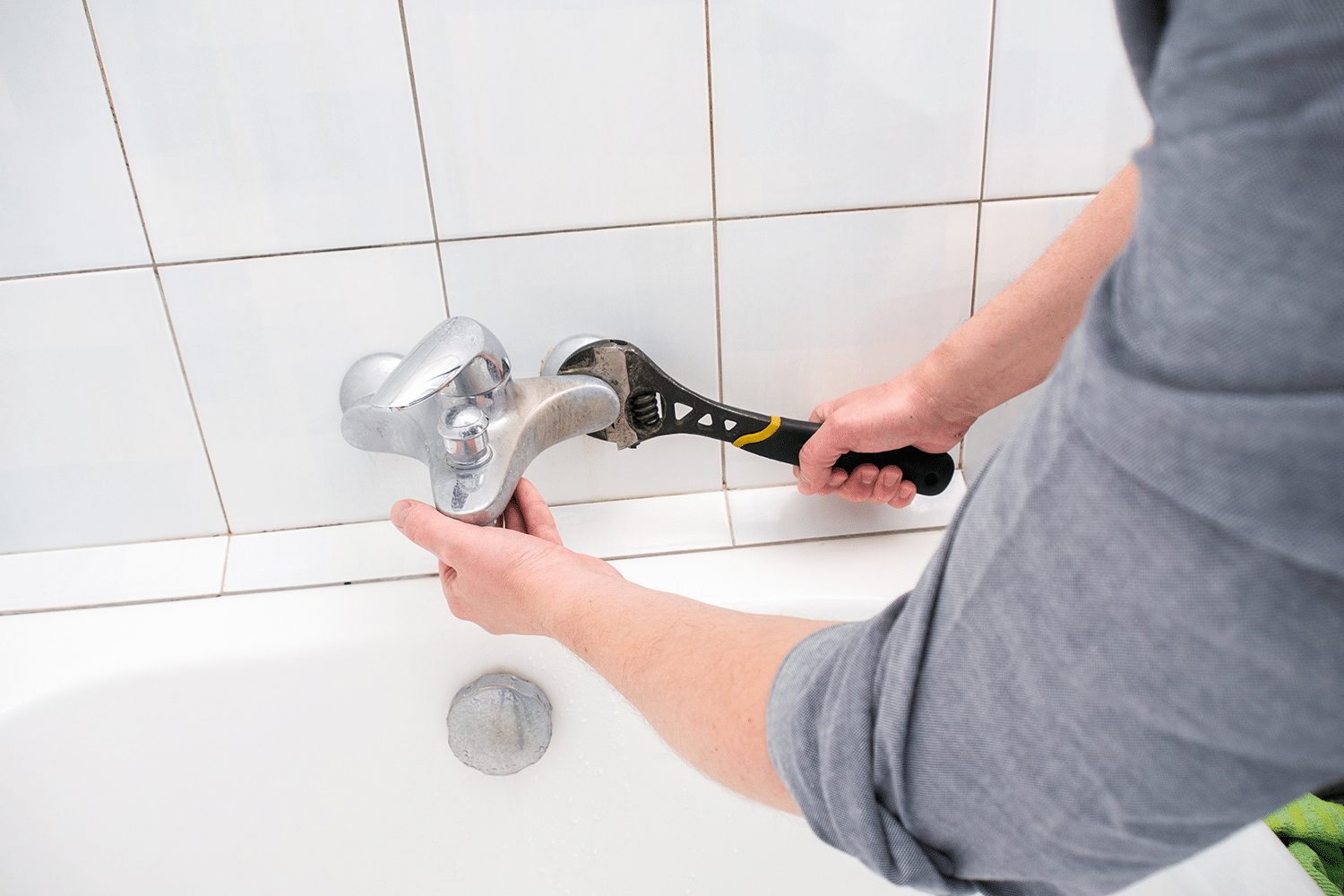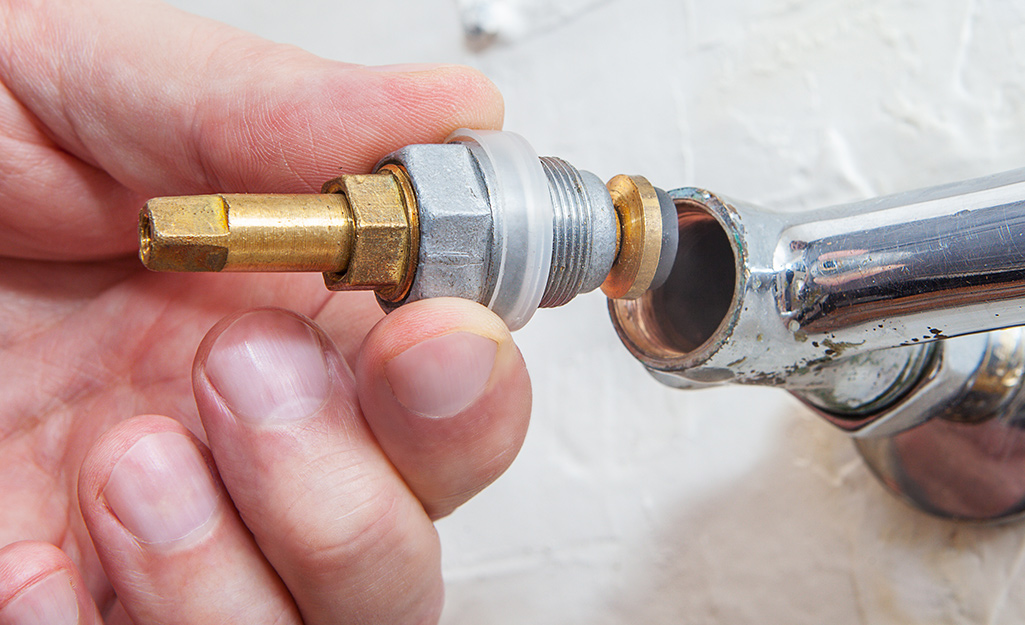We have stumbled on this great article on Should I Repair or Replace a Leaky Faucet? listed below on the net and felt it made sense to write about it with you over here.

Dripping taps might feel like a small inconvenience, but their impact goes beyond just the nuisance of the audio. From wasting water to incurring unneeded financial costs and health threats, neglecting a dripping faucet can lead to different repercussions. In this article, we'll explore why it's essential to address this typical household concern immediately and efficiently.
Waste of Water
Environmental Impact
Dripping taps contribute considerably to water wastage. According to the Epa (EPA), a solitary tap trickling at one drip per second can squander greater than 3,000 gallons of water per year. This not only stress water resources however additionally impacts ecosystems and wildlife based on them.
Financial Expenses
Increased Water Bills
Past the ecological effect, dripping faucets can blow up water bills considerably. The gathered waste over time equates right into greater energy costs, which might have been stayed clear of with timely repair work.
Possible Home Damage
Additionally, long term dripping can cause damage to components and surfaces bordering the tap. Water build-up can trigger discoloration, deterioration, and also architectural concerns if left unattended, leading to additional repair work prices.
Health and wellness Issues
Mold And Mildew and Mold Growth
The consistent visibility of wetness from a trickling faucet produces a perfect setting for mold and mold development. These fungi not just endanger interior air high quality however also pose health and wellness threats, particularly for people with breathing conditions or allergic reactions.
Waterborne Illness
Stationary water in trickling taps can end up being a breeding place for microorganisms and various other pathogens, enhancing the threat of waterborne diseases. Pollutants such as Legionella microorganisms flourish in stagnant water, possibly causing serious health problems when consumed or breathed in.
DIY vs. Specialist Fixing
Advantages and disadvantages of Do It Yourself Repair Service
While some may attempt to deal with a dripping tap themselves, do it yourself repair services feature their own set of challenges. Without correct knowledge and tools, do it yourself attempts can exacerbate the problem or lead to insufficient repair work, extending the trouble.
Advantages of Hiring an Expert Plumber
Employing a professional plumber ensures that the underlying cause of the dripping tap is dealt with effectively. Plumbers possess the proficiency and tools to identify and fix tap problems efficiently, saving time and minimizing the danger of more damage.
Step-by-Step Overview to Taking Care Of a Dripping Tap
Devices Called for
Before trying to take care of a trickling tap, collect the necessary devices, consisting of a flexible wrench, screwdrivers, substitute parts (such as washers or cartridges), and plumber's tape.
Common Tap Issues and Their Solutions
Determine the kind of faucet and the specific problem causing the drip. Typical issues consist of worn-out washers, rusty shutoff seats, or malfunctioning O-rings. Describe supplier guidelines or on-line tutorials for detailed assistance on repairs.
Preventive Measures
Normal Maintenance Tips
To prevent trickling faucets, execute routine upkeep such as cleaning up aerators, checking for leakages, and changing damaged components without delay. Furthermore, take into consideration mounting water-saving devices or updating to more effective components.
Value of Prompt Repairs
Resolving dripping faucets as soon as they're observed protects against further water waste and potential damages, inevitably saving both water and cash over time.
Effect On Home Worth
Perception of Well-Maintained Home
Preserving a building in good condition, including dealing with maintenance problems like trickling faucets, enhances its regarded value and desirability among potential purchasers or lessees.
Impact on Resale Worth
Characteristics with properly maintained plumbing fixtures, consisting of faucets, command higher resale values in the realty market. Addressing trickling faucets can contribute to a positive impression throughout building examinations and arrangements.
Ecological Responsibility
Individual Contribution to Conservation
Taking responsibility for repairing leaking faucets aligns with more comprehensive initiatives toward water conservation and ecological sustainability. Every individual's actions jointly make a significant effect on preserving priceless resources.
Sustainable Living Practices
By focusing on punctual repair services and embracing water-saving routines, people contribute to lasting living methods that benefit both existing and future generations.
Final thought
Attending to a leaking tap surpasses plain benefit; it's an essential action towards conserving water, reducing monetary expenses, and guarding health and wellness and residential or commercial property. Whether via DIY repair services or specialist help, doing something about it to take care of trickling faucets is a small yet impactful way to advertise responsible stewardship of resources and add to a healthier, more lasting future.
How to Fix a Leaky Faucet: Step-by-Step Repair Guide
A leaky faucet may seem like a simple annoyance, but if it's not fixed promptly, that leak could cost hundreds to potentially thousands. From water damage to mold, mildew, and high water bills, even a tiny leak can be catastrophic if left unattended. Damage like this can even affect the overall value of your home, so it's important to take the right approach for leaky faucet repair. You may need the help of a plumber in some cases, but we've got a few tips you can try on how to fix a leaky faucet before calling the pros.
Four Faucet Types
When you're learning how to fix a leaky faucet, the first step is knowing what kind of faucet you're working with! There are four common types.
Cartridge Faucets
Cartridge faucets come in one- or two-handled varieties. In one-handled cartridge faucets, hot and cold water combines in a single cartridge. In the two-handled versions, hot and cold water are controlled separately and mixed in the faucet.
Ball Faucets
Ball faucets have a single lever you push up and down to adjust the pressure and rotate to change the temperature. A slotted metal ball controls the amount of water allowed into the spout.
Compression Washer Faucets
They're the oldest type of faucet, but they're still used in many homes — especially older ones. Compression faucets have two separate handles that, when turned, raise or lower the washer that seals a water valve. This valve stops water from flowing through the faucet when it is turned off.
Disc Faucets
Disc faucets rarely need to be repaired due to their maintenance-free design. The water flow is controlled by two discs — the upper one raises and lowers against a fixed lower disc, creating a watertight seal. If your disc faucet starts leaking, you may need to replace the seals or clean residue buildup from the inlets.
Fixing a Leaky Faucet
Step 1: Turn Off the Water
Whether you're learning how to fix a leaky bathtub faucet or how to fix a leaky kitchen faucet, always turn off the water supply to your working area when you're fixing a leak. The last thing you want is a flood added to your list of things to fix.
Look for the shutoff valves below your sink or around the tub and turn them clockwise to stop the water flow. If your faucet doesn't have shutoff valves, you may need to turn off the water for the whole house. Check to make sure it's off by turning the faucet on. If nothing comes out, you're ready to start the repair.
Step 2: Take Apart the Faucet
How you disassemble your faucet depends on the type of fixture you have. You can use a flathead screwdriver to remove the caps on top of the handle or handles for cartridge and compression faucets. Inside, you should see handle screws. Unscrew these with a screwdriver to remove the handle.
Disc- and ball-style faucets will typically have an inlet screw near the handle, and removing that will reveal the interior of the faucet.
Detach the Valve Stem
For cartridge- and compression-style faucets, you'll see the inner valve stem or cartridge once you remove the faucet handles. If you have a compression faucet, unscrew the brass valve stem. If you have a cartridge faucet, pull out the cartridge. If your cartridge has been in place for a while, it may require some tools or extra force to remove it due to mineral deposits.
Examine and Replace Parts
Once you've removed the parts, check them out to confirm what needs to be replaced. You may see corroded rubber washers, O-rings, stems, or cartridges. On a ball-style faucet, check the seats and springs for damage.
If you need to repair a leaky disc faucet, check the inlet and seals on the lower disc.
Once you determine what parts must be replaced, visit your local hardware store. Bring the damaged parts with you to ensure you can purchase the correct components to replace them.
Clean Valves and Faucet Cavity
If you've removed a stem or cartridge, you may notice mineral buildup in the faucet's threads. Use white vinegar to clean the valve seat by soaking it for a few minutes, then scrub it away with a soft toothbrush and rinse with warm water. You can also clean the interior of the faucet in the same way.
Reassemble the Faucet
Once your faucet is cleaned and the required parts have been replaced, it's time to reassemble it. Put the pieces back together and slowly turn the water supply back on. Doing this slowly is crucial because too much initial water pressure can damage the new hardware you've just installed.
https://homewarranty.firstam.com/blog/how-to-fix-leaky-faucet

Do you really like reading about Should I Repair or Replace a Leaky Faucet?? Create a remark directly below. We'd be glad to listen to your views about this blog. In hopes to see you back again before long. Are you aware of anybody else who is fascinated with the subject? Take a moment to promote it. Thanks a lot for taking the time to read it.